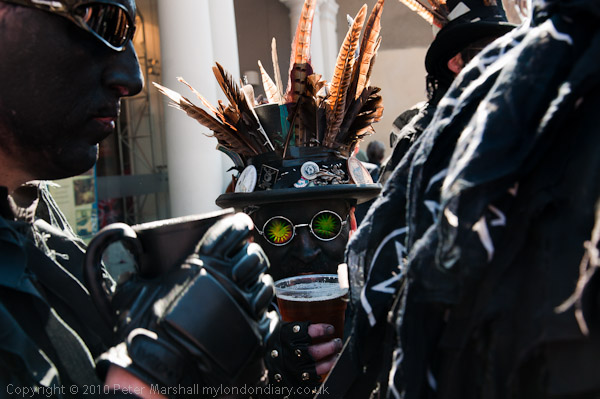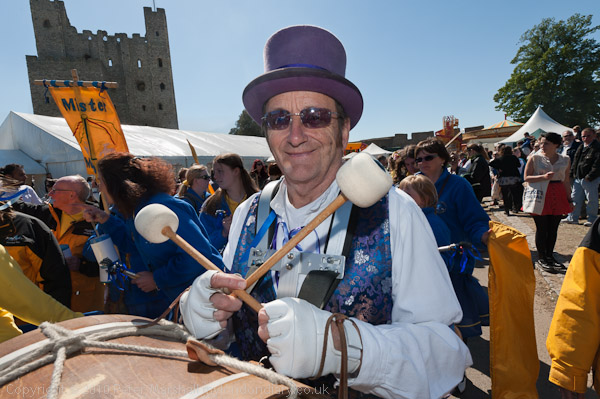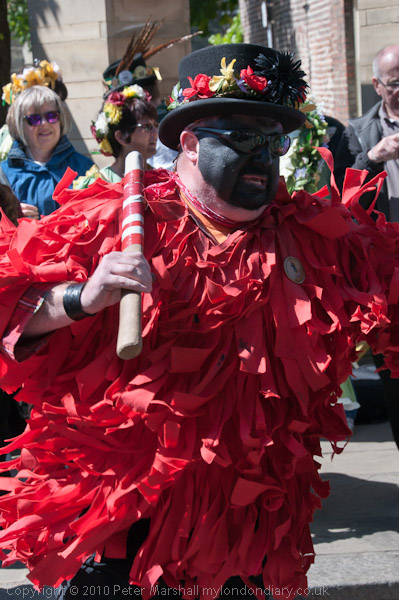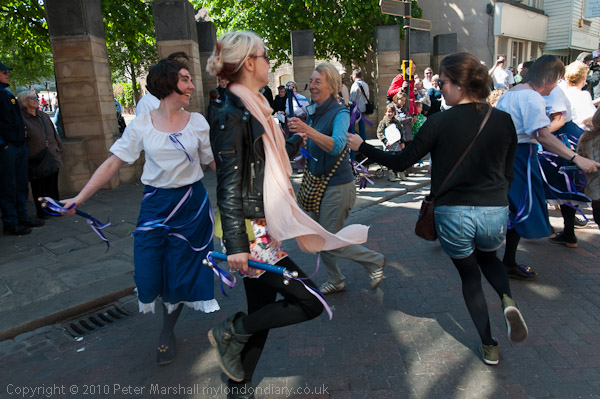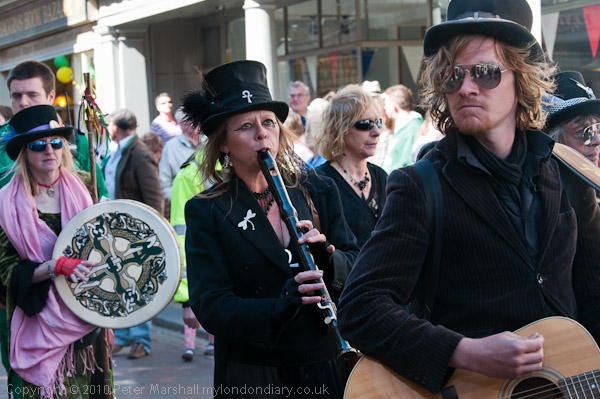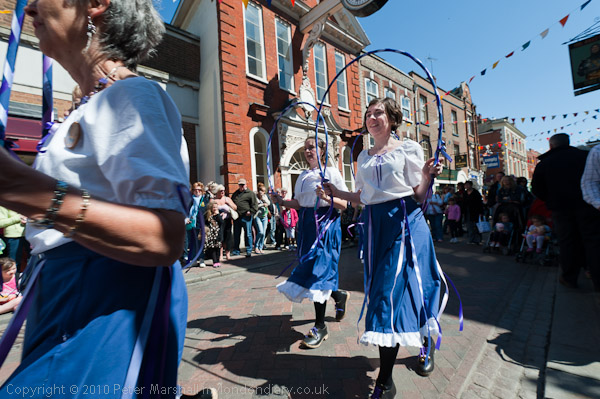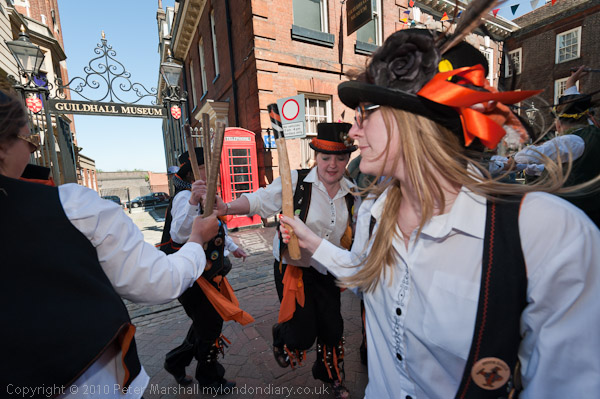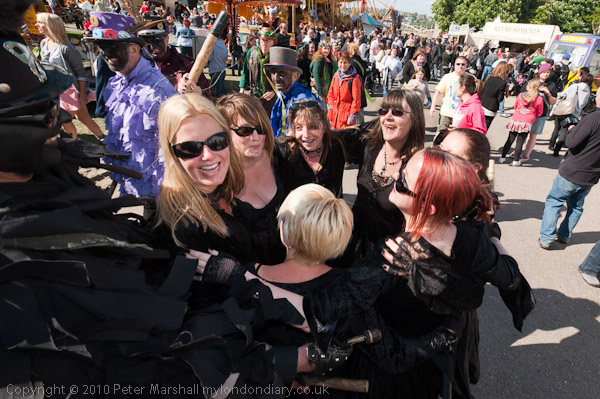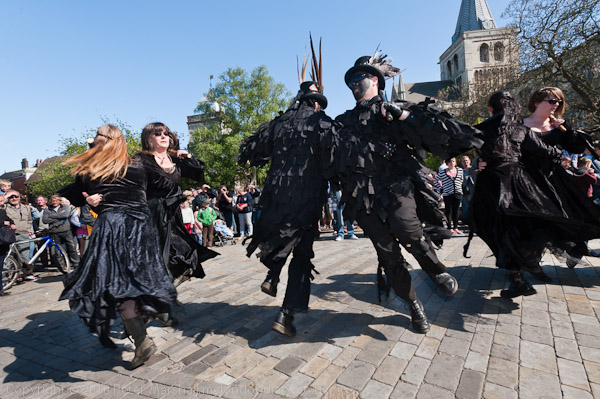No New Coal Rally and March: On Sunday 3rd August I took a train to Rochester in Kent to photograph a rally in the town of Rochester from which people were marching to the Climate Camp was at Kingsnorth on the Hoo Peninsula in Kent where E.ON were intending to build the country’s first new coal-fired power station in 30 years.
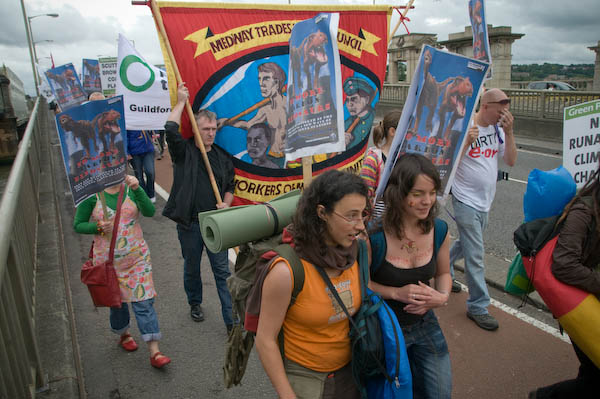
I wasn’t able to attend the Climate Camp itself as I was leaving for Glasgow early the following morning so I left the marchers on their way to the site, seven miles away.

There was a large police presence at the rally and for the march, and later at Kingsnorth a number of protesters were arrested, with others assaulted by police who carried out a repressive action against the campers.

Press who had gone to cover the event were stopped and searchers, some multiple times and were subjected to both obvious and secret filming, as well as being pushed and shoved by police who demanded unnecessary personal information. Months later Kent Police admitted they had been wrong to film journalists, but claimed it was hard to tell them from the protesters – despite the fact that they all wore or showed the police-recognised UK Press Cards.

E.ON’s proposals to build a new and highly polluting power station at Kingsnorth had gone largely unnoticed in the media until the Climate Camp brought the issue to national attention. The over-reaction by the police helped to raise its profile, as did the trail of the Kingsnorth Six, activists arrested for causing an alleged £30,000 damage to one of the chimneys of the existing coal-fired in October 2007 and charged with criminal damage.

The activists claimed they had “lawful excuse” for their actions in that they carried it out to help prevent the much greater damage that a new coal-fired power station would cause by accelerating climate change.

Their trial heard evident from five defence witnesses, one of them Professor James Hansen, a former climate change adviser to the US White House, who stated that the social cost of emitting a tonne of CO2 was around £50. He estimated that a new coal-fired power station would cause around £1 million worth of damage per day it ran.

In truth the activists had not actually damaged the chimney significantly, but had simply painted the word ‘Gordon‘ on it, but they were acquitted in September 2008 because the jury found the damage they did to the smokestack was outweighed by the harm done to the planet by emissions from the power station.

E.ON was forced to abandon its plans largely because of the substantial public protests and criticism much of it arising from the publicity given to the Climate Camp and the trial.

The UK establishment were appalled by the verdict, and we have recently seen part of their reaction to this in the recent trial of Just Stop Oil activists who were judged to have committed contempt of court for attempting to introduce similar issues in their defence and then given draconian sentences for their peaceful protest. The law is meant to protect the interests of the rich and powerful not the planet.

You can read more about the rally in Rochester and the march towards Kingsnorth on My London Diary. One Climate Camp Caravan had started from Heathrow a week ago and another, the Stop Incineration Climate Camp Caravan had been travelling from Brighton, both demonstrating at various related sites along their routes and they met on Sunday morning in the middle of Rochester for a ‘No New Coal’ Rally attended by around 300 people.

After the rally the protesters set off to march to Kingsnorth and I went with them across the Medway and up the long hill in Strood before leaving them and returning to Strood station.
More at No New Coal Rally and March.
Flickr – Facebook – My London Diary – Hull Photos – Lea Valley – Paris
London’s Industrial Heritage – London Photos
All photographs on this page are copyright © Peter Marshall.
Contact me to buy prints or licence to reproduce.
